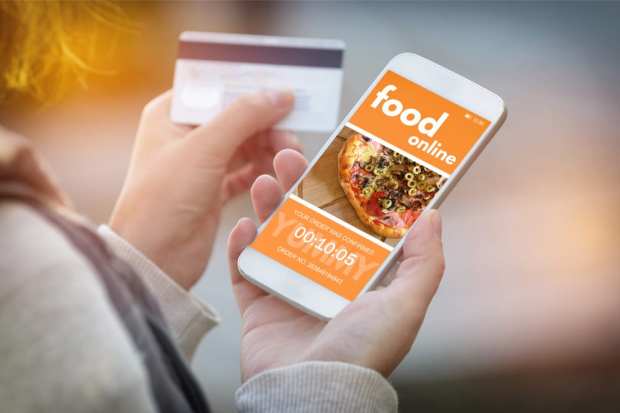Feasting, Fun And Fraud Mark The Mobile Order-Ahead Summer

With the National Restaurant Association projecting up to $240 billion in losses by the end of 2020 and millions of restaurant jobs gone, along with their former workplaces, a nation mourns our glorious gastronomic past. There’s rebirth already, happily. It has upsides and downsides.
Downsides already stated (jobs, businesses, revenues lost) are the big part. Another involves heightened fraud vectors swimming like sharks around digital-first first-timers. On the upside, however, is the return of restaurant dining, many cool new takes on it, and the ways that financial institutions (FIs) and FinTechs are partnering to make dining yummy and secure.
The July 2020 Mobile Order-Ahead Tracker® done in collaboration with Kount shows that online orders are positively booming, but not all of that activity is good. Some must stop immediately.
“New digital account openings have climbed in parallel with incidents of cybercrime as consumers have migrated to shopping primarily online during the COVID-19 pandemic. Recent research found that online food orders jumped 134 percent and the number of consumers using new accounts rose to between 20 percent and 25 percent of transactions as restaurants and QSRs closed and consumers turned to delivery and curbside pickup options,” the Tracker states. “This compares to pre-pandemic levels of between 5 percent and 7 percent.”
Loyalty, on the other hand, is looking all rainbows-and-unicorns again as banks and brands and pull out the stops to kickstart cashflow and fast-track a recovery. The July Mobile Order-Ahead Tracker® is brimming with actionable insights on both fraud fighting and loyalty strategy.
Defending Trust
Loyalty and fraud know each other, by the way. Cybercrooks have several attack vectors designed to penetrate card and bank accounts by hacking loyalty program interactions.
“Account takeover [or ATO] fraud is an issue of major concern for online businesses and digital commerce, particularly as the demand for online purchases has increased since March. Restaurant loyalty accounts are often the target of ATOs because of the stored value they contain,” Rich Stuppy, chief customer experience officer at Kount, told PYMNTS.
“Restaurants are responsible for securing a consumer’s digital journey through their websites; however, enhanced protection shouldn’t include additional friction,” Stuppy said, adding that Kount’s platform, for example, “… establishes the level of trust for each identity behind every payment, account creation and login event.”
Stuppy also notes that “Kount Control Account Takeover Protection is the only ATO solution built on the Identity Trust Global Network, linking risk and trust signals to protect and enhance the entire customer journey.”
Loyalty, With A Side Of Guac
To cover those billions in lost dollars, surviving quick-service restaurants (QSRs), fast-casual eateries and even fine dining establishments have turned to order-delivery aggregators to keep the kitchens working and the lights on.
PYMNTS’ Provider Ranking of Mobile Order-Ahead Apps is updated regularly, ranking nearly 60 apps (and counting) as America’s love affair with mobile food delivery keeps on cooking.
Meanwhile, loyalty (and closely-related customer experience) is deciding winners and losers.
“Restaurants are fostering … loyalty with programs that reward customers for repeated purchases, with the idea that those faced with several meal options will pick the one that empowers them with their purchases,” Zipporah Allen, Taco Bell vice president of digital experiences, told PYMNTS.
“Taco Bell uses a system that grants customers rewards points for every dollar spent, and these points can be redeemed for free menu items, for example,” she said. “Loyalty is a huge part of our [digital initiative]. We know that when customers are shopping for a digital experience, they want a one-on-one, personalized experience, and loyalty [programs] lay the foundation for that.”
